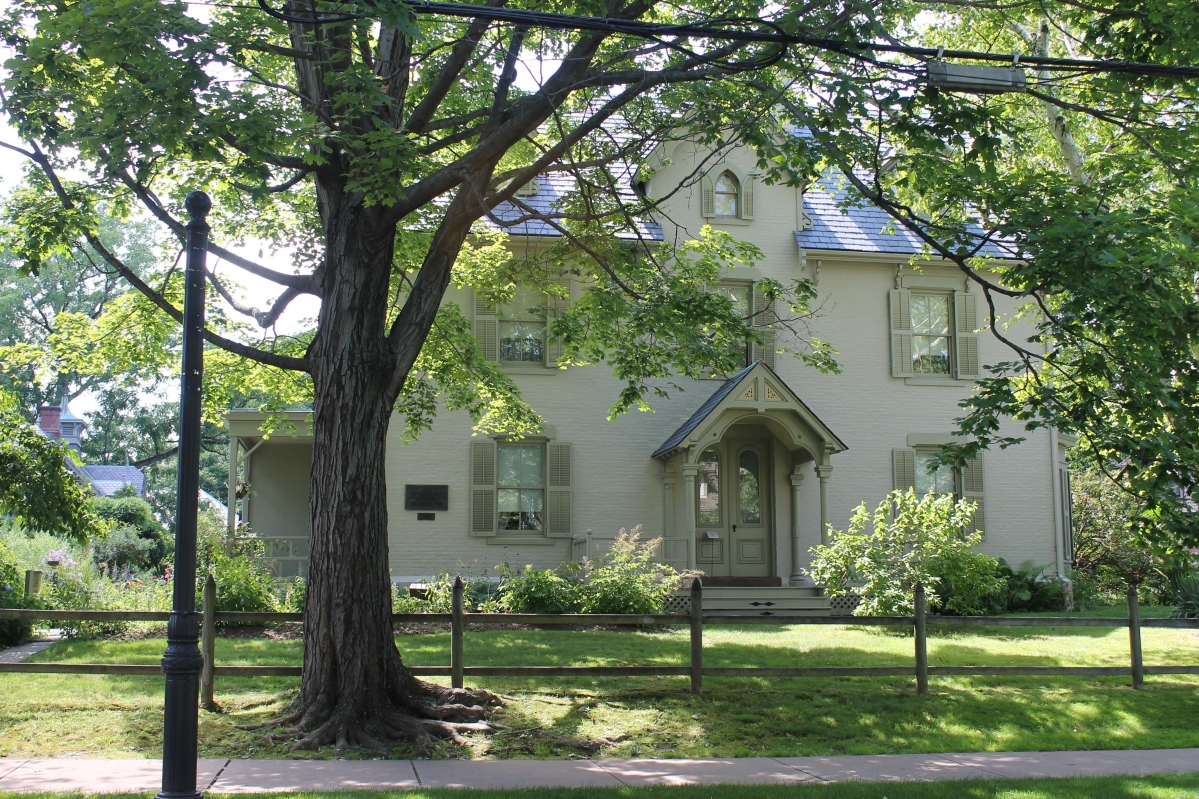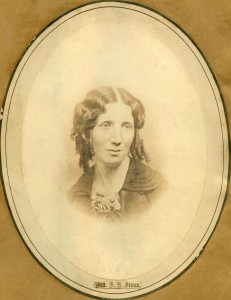By Andrea Valluzzo
HARTFORD, CONN. – Lots of changes are afoot at the Harriet Beecher Stowe Center, with a major renovation project budgeted at $3.3 million that will be completed by this summer.
The work at the Stowe Center, which has remained open while work is being done, includes renovating 44 original windows, putting in a new climate control system and creating a stable environment for the historic artifacts here, and period-appropriate interior renovation to recreate her home from her own words and images of the time. Conservation work on select works of art she owned – or painted (Stowe was well known as an author but she was also a painter) – was also done.
Through spring, the center’s interactive tour is taking place in two other buildings on campus: the 1873 Stowe Visitor Center and 1884 Katharine Seymour Day House, featuring significant artifacts and furnishings from the Stowe House. Tours include a look inside the Stowe House as construction allows.
Born in 1811 in Litchfield, Conn., Stowe wrote more than 30 books, including her antislavery novel Uncle Tom’s Cabin. The book helped drive an international movement to abolish slavery that led up to the Civil War.
Stowe lived in this Gothic Revival house on Forest Street from 1873 until she died in 1896. Restored and opened to the public in 1968, the home was one of the first Victorian house museums in the country and one of the first focusing on a woman.
The Harriet Beecher Stowe Center holds the largest collection of materials related to Stowe’s life and work, many of which are on view in the Stowe House. The collections are nationally important, particularly for understanding the impact of slavery and the historical and literary significance of Stowe’s novel.
Shedding more details on the project is the center’s executive director Katherine Kane:
Why is this preservation work so important?
The Stowe Center uses writer Harriet Beecher Stowe’s life and impact to inspire positive change. The Stowe House Project is the first major interior renovation of Stowe’s home since it opened in 1968. As a museum, part of the center’s work is preservation. This project is about making sure the house and the historic artifacts survive for the future in strong condition. And new research has given us greater insight into Stowe’s home life and decorating decisions, so we can do a better job telling her story and putting visitors in her home, in the spaces where she lived, for a deeper understanding of Stowe, her work and why she is relevant today.
Why complete the project now?
After decades of use, and more than one million visitors, the spaces are worn and in need of refreshing: carpeting is threadbare, plaster moldings are crumbling and wallpaper is soiled and peeling. Stowe House mechanical systems are reaching the end of their life expectancy. Double pane windows from the 1960s have failed; UV film past its useful life and above-normal light levels threatens the historic collection. Temperature and humidity throughout the house vary unacceptably for artifact preservation; the third floor is not heated or air-conditioned.
More is known about how the Stowe House looked and how it was decorated, so worn finishes can be repaired and replaced to better represent Stowe’s plan.
What will the tour be like when the project is complete?
An interactive dialogue-based tour experience using conversations about Stowe’s story, Uncle Tom’s Cabin and its impact and connections with modern social issues will replace the passive, lecture-based house tour. The tour experience illustrates the center’s civic engagement mission, and responds to Twenty-First Century audience expectations. It is immersive and uses media and interactive features. Visitors leave understanding Stowe as an example of civic engagement; and they are encouraged to act on a self-identified issue. Working with scholars and consultants, using new research and community conversations with a variety of audiences, the tour experience is breaking ground and drawing interest from historic sites around the country.
Tell us some details about the nine paintings and their frames that were conserved.
All of the paintings were owned by Stowe and hung in her home, which was described by her contemporaries as “an art gallery in miniature,” and “the pictures, which are obviously heart selections, are skillfully placed, and seem to extend to the caller, a friendly greeting.” Portraits of the two most important men in Stowe’s life, her father and her husband, were conserved. Prior to treatment, the portrait of Stowe’s father Lyman Beecher was in such poor condition that it has never been shown to the public. Conservation treatments were done at the Williamstown [Mass.] Art Conservation Center.
Concerning the period-appropriate interior renovations to recreate the home as it was in Harriet Beecher Stowe’s time, how was this accomplished?
A tremendous amount of research has gone in to recreating the interior of the Harriet Beecher Stowe House. Nineteenth Century photographic images of Stowe’s two Hartford homes and her winter home in Florida were carefully examined. Letters from family and friends were read for information on decorating, carpeting, paintings, etc. Visitors to the famous author wrote first-hand accounts of their visits, with detailed descriptions of the home’s interior décor. These accounts mention color schemes, furnishings, and art… Staff and historic design consultant Jean Dunbar of Lexington, Va., used all these primary sources in the finishes plan for the house.
The Harriet Beecher Stowe Center is at 77 Forest Street.
For additional information, www.harrietbeecherstowe.org, www.stowecenter.org or 860-522-9258.






